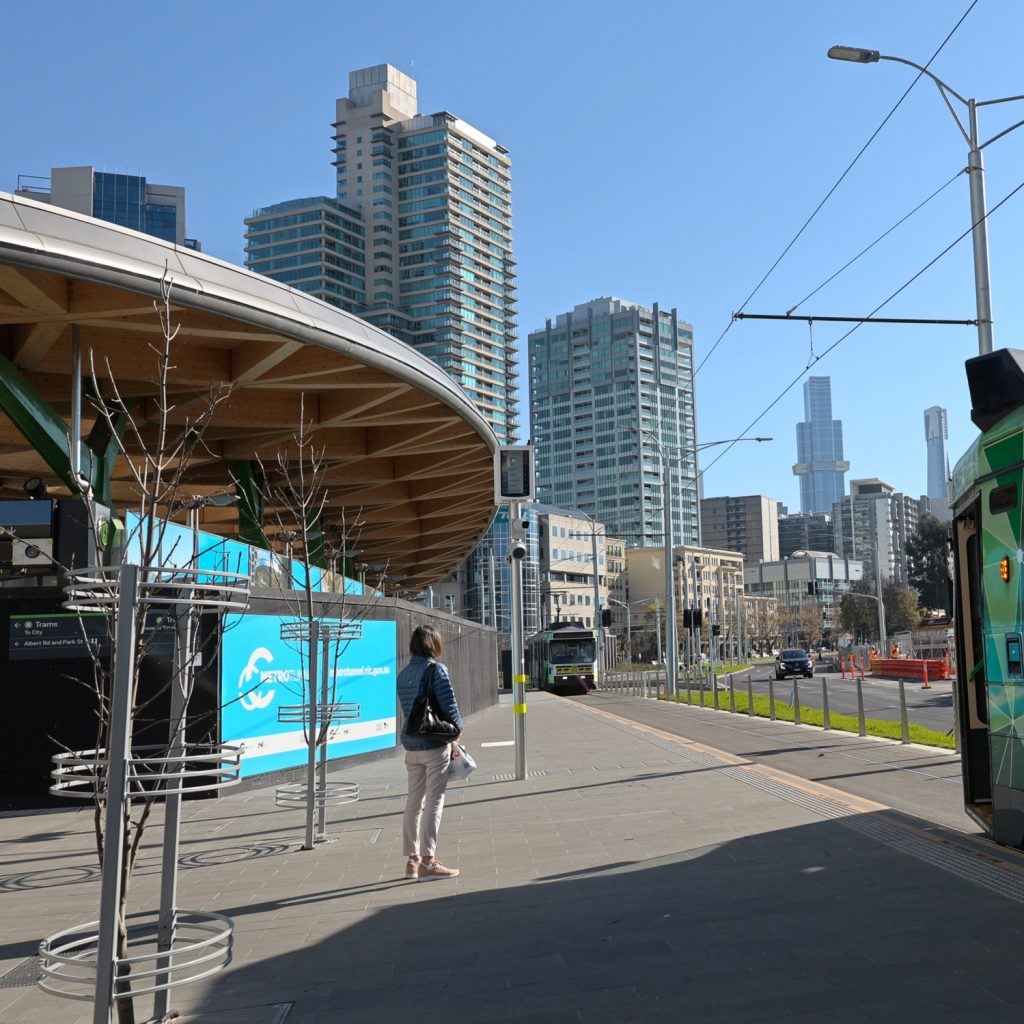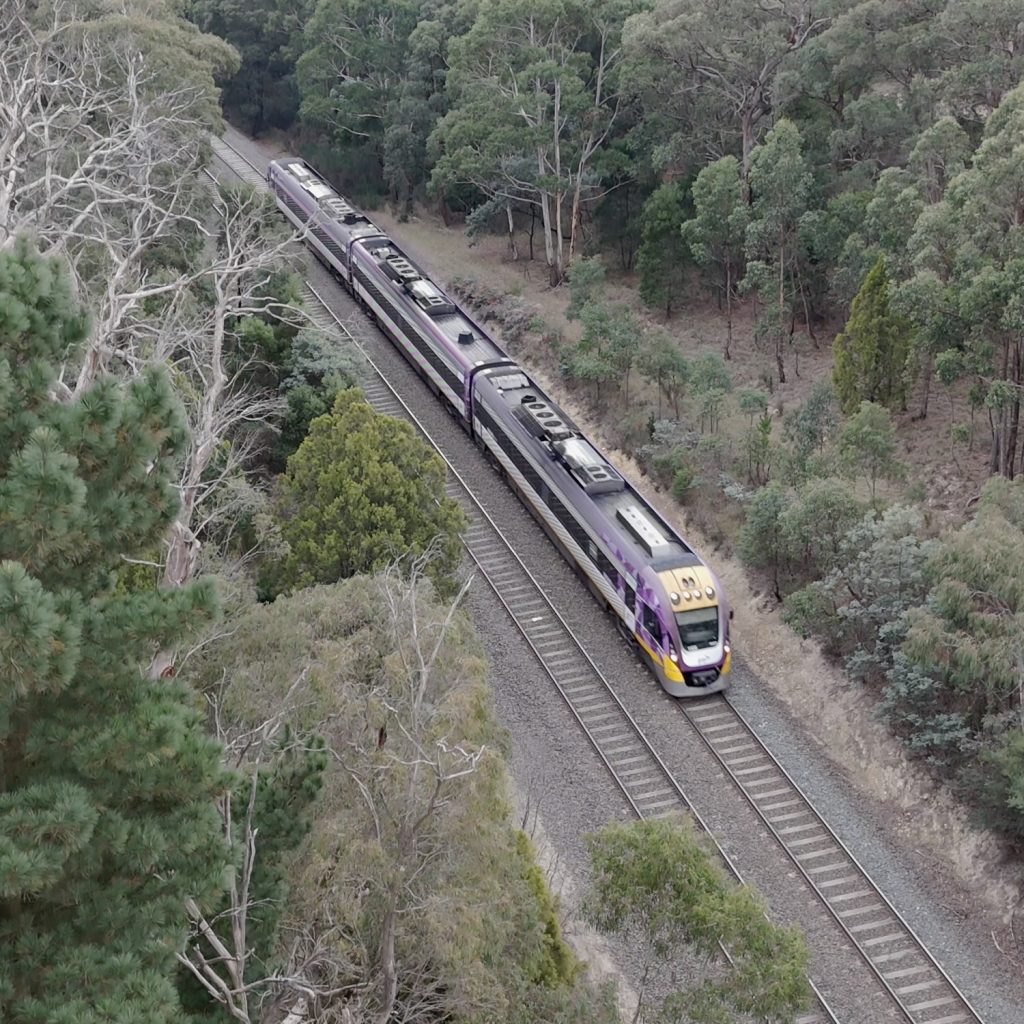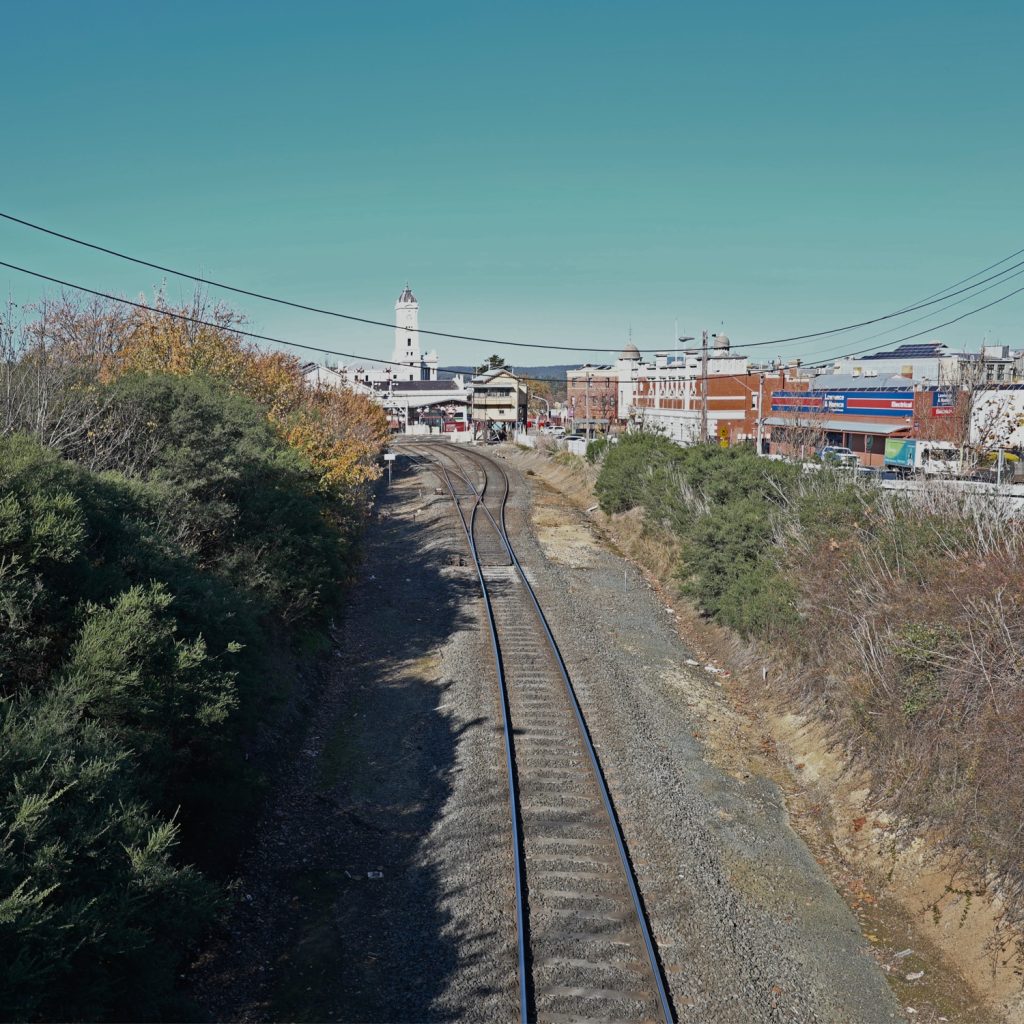| Policy Title | Victorian Sustainable Transport Plan |
| Policy Focus Area | Efficient and Sustainable Transport Solutions |
| Tier of Government | State |
| Effective Date | 17/02/2025 |

Trams at the future Anzac station
Policy Vision: To provide sustainable, affordable and accessible transportation options for residents across the state while enhancing safety and reducing environmental impact.
Current evidence tells us that most people will choose the transport mode that is most convenient to them. Therefore the transportation projects that are funded actively impact the usage share between transport modes – by improving the convenience of a particular transport mode – rather than just reacting to them.
The evidence also tells us that rail based transport is the most efficient and least environmentally impactful when a medium to large number of people need to move between two places, such as for commuting or traveling between population centers. As such this plan focuses on improving the infrastructure of rail based transport for these activities.
While this does not mean ignoring road based transport (particularly in relation to the maintenance or improving the safety of the existing road network) it does mean that large road projects designed to increase the convenience of driving are not prioritized.
Policy Outcomes:
| Electrification of the existing rail corridors to Bacchus Marsh via Melton and Wyndham Vale via Tarneit and introduction of suburban rail service as an immediate priority. |
| New cross-city broad-gauge double track rail tunnel (Melbourne Metro 2) connecting the new Bacchus Marsh suburban services via Sunshine and Werribee suburban services in the west, through Newport, Fisherman’s Bend and Fitzroy to Merri in the north-east. |
| New electrified (to high-speed rail standard, ie. 25 kV AC) standard-gauge double track approach for regional and long distance trains, co-located within the new cross-city tunnel between Newport and Southern Cross. |
| Conversion to standard-gauge of the Ballarat/Maryborough/Ararat V/Line corridor and (pending viability review) reinstate rail passenger service to Hamilton, Horsham and Mildura using the existing freight-only corridors. |
| Progressive introduction of hybrid regional trains that can run under their own power when required but take advantage of electrification (1500 V DC or 25 kV AC) when available. |
| Significant expansion of the Sunshine train station as a major interchange between multiple suburban and regional train lines. |
| Electrification of intercity regional routes by the late 2030s and the complete passenger network by the late 2040s. |
Policy Framework:
| The development of a comprehensive Service and Capacity Framework for metropolitan Melbourne, regional cities and towns. This policy must define minimum service levels for different population densities in terms of transport mode/capacity, distance to routes, frequency and hours of service. |
| Guidelines on the level of rail service required for regional areas based on population size or the potential for commuter or tourism travel. Guidelines on level of direct rail service required between regional population centers. |
| Requirement that the service levels specified in the framework appropriate for the approved population density be provided for all newly constructed housing developments prior to residents moving in. |
| Longer term planning for new metro/train lines suggested by the Service and Capacity Framework. |
Summary: The Civil Voice Party proposes the Victorian Sustainable Transport Plan to address transportation challenges and promote a sustainable future. This plan emphasizes electrified rail transport and, through the Local Sustainable Transport Initiative, efficient tram and bus connections to offer accessible and eco-friendly travel options for residents. By enhancing safety and reducing environmental impact, the plan aims to create a better transport system for all along with healthier and more vibrant communities.

V/Line Velocity train outside of Macedon
The proposal would immediately start planning for electrified rail services to the growth areas of Bacchus Marsh and Melton, enabled by a new broad-gauge double track cross-city tunnel (Melbourne Metro 2) connecting Bacchus March and Werribee services with Mernda services. This new rail line would interchange with Sunbury services at Sunshine and Williamstown and Altona loop services at Newport.
Electrification of services to Wyndham Vale and Tarneit would also be re-prioritized as part of the Suburban Rail Loop project, with services to Melbourne Airport and Broadmeadows, with an interchange at Sunshine, completed as soon as possible.
The progression towards converting Victoria’s regional rail to standard-gauge should continue, for increased interoperability with freight and interstate traffic. Regional train services through Ballarat would be converted to standard-gauge, solving the lack of a direct standard-gauge corridor for freight to Geelong and Melbourne from the north west of the state.
This regional line will be completely separated from suburban services and new sections (such as potentially avoiding the decent and accent into Bacchus Marsh and quadruplication to Melton) can be electrified and constructed for a higher top speed (250km/h). Following a feasibility study, long-haul passenger service can be reinstated to Hamilton, Horsham and Mildura using the existing freight-only corridors, either as through-services from Melbourne or from Ballarat.

Looking towards Ballarat Train Station
Starting with the upgraded Ballarat line, V/Line would progressively introduce hybrid regional trains that can run under their own power when required but take advantage of electrification (1500 V DC or 25 kV AC) when available. This would allow for the progressive electrification of the regional passenger network starting with intercity routes by the late 2030s and the complete passenger network by the late 2040s.
The upgraded Ballarat line would connect to a new regional and long distance rail approach into the CBD, co-located within the new cross-city tunnel from its western portal near Newport until Southern Cross. These new tracks could also be immediately used by regional and interstate services to Albury, Sydney and Adelaide.
While this policy advocates for some specific transport outcomes, what is required longer term is a systematic approach to determining minimum service levels and prioritizing projects to ensure these levels within our cities and towns. For this, the Civil Voice Party advocates for the development of a detailed Service and Capacity Framework. This will also guarantee sufficient services in new housing areas and that the density being built is appropriately supported by the provided infrastructure.
Tags: #SustainableTransport #SafeCommute #GreenTravel #AccessibleTransit #BetterInfrastructure #PublicTransport #CivilVoice
